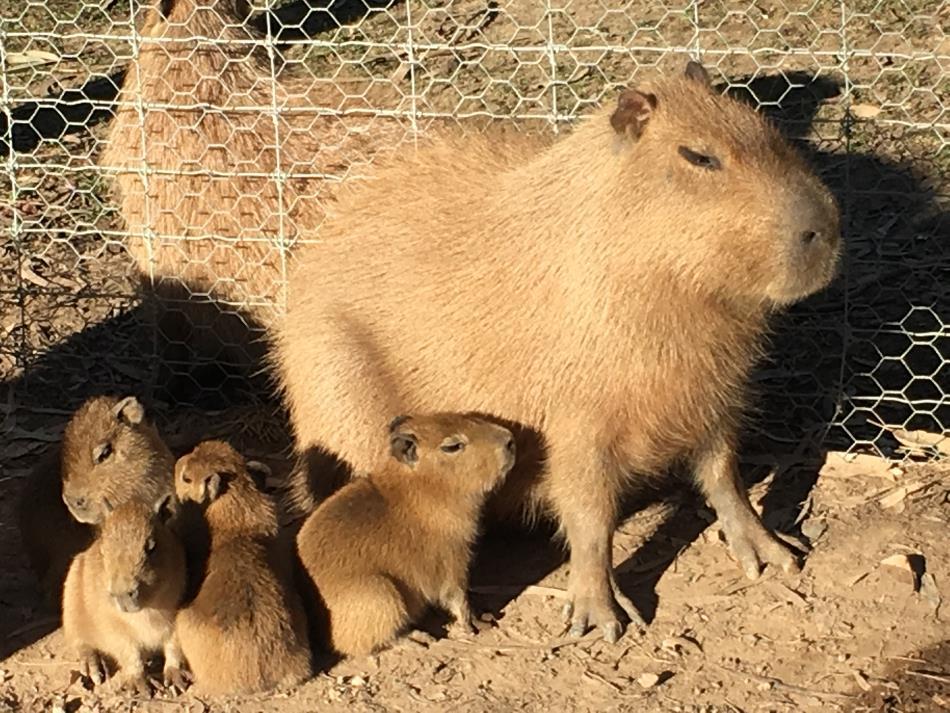Capybara (Hydrochoerus hydrochaeris)
Habitat:
Capybaras are located in South America and also Panama, the most southern country of Central America. Capybaras are mostly found in dense forests near water sources such as streams, ponds, rivers, swamps and lakes.
Description:
The Capybara has a heavy, barrel-shaped body and short head, with reddish-brown fur on the upper part of its body that turns yellowish-brown underneath, Adult Capybaras grow to 106 to 134 cm in length, stand 50 to 62 cm tall, and typically weigh 35 to 66 kg with females slightly heavier than males They have slightly webbed feet and their hind legs are slightly longer than their forelegs; they have three toes on their rear feet and four toes on their front feet. Their muzzles are blunt, with nostrils, and the eyes and ears are near the top of their heads.
Status:
Least Concern
Interesting facts:
- The Capybara is the largest Rodent in the World!
- The name Capybara means ‘Masters of the Grass’ according to the Guarani Indians, European Naturalists call them ‘water pigs’.
- Capybaras have several distinct vocalisations to communicate with others in the herd; guttural purr, alarm bark, clicks, squeaks, whistles and grunts.
- Capybaras have two long front teeth that never stop growing. Rather, their teeth are worn down by chewing on foods or bark.
- They are able to stay completely submerged under water for 5 minutes at a time!
- Capybaras can run as fast as a horse and sleep in water with only their noses out above the surface.
- Diet: Capybaras are herbivores and manly feed on grasses & aquatic plants but do occasionally eat fruit & tree bark.
- Social: Capybaras usually live in groups of about 10-20 individuals but in the dry season can be seen in herds of up to 100 individuals consisting of various groups.
- Reproduction: Females become sexually mature at 7-12 months while males at 15-24 months.
- Gestation: The gestation period is 130 to 150 days giving birth to usually 4 babies, but may produce between one and eight in a single litter. Within a week, the young can eat grass, but will continue to suckle, from any female in the group until weaned at about 16 weeks.
- Predators: Foxes, Bush Dogs, Feral Dogs, Ocelots, Jaguars, Eagles, Caracaras, Black Vultures and Human Hunters.
- Lifespan: 8-10 years.







